Premium
Missing Kenyan Climber Cheruiyot Kirui found dead on Mount Everest
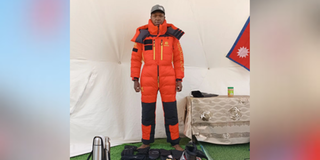
On May 17, 2024, Kenyan hiker Cheruiyot Kirui posted this photo on his Instagram page before embarking on the Mt Everest climb.
A daring mission by a Kenyan hiker to conquer Mount Everest, the tallest mountain in the world, has ended in death.
Mr Cheruiyot Kirui, an accomplished climber who had reached the peak of Mount Kenya more than 10 times, went missing above 8,000 metres on Mt Everest on Wednesday.
He was found lifeless in Everest's 'death zone', name given to areas above 8,000 metres, on Thursday morning.
"With profound sadness, we share the news of Kenyan mountaineer Cheruiyot Kirui's passing on Mt Everest. His body was found a few meters below the summit point of Mt Everest," reports Everest Today, which covers mountaineering over the Himalayas and Karakoram with a special focus on 8, 000-metre peaks.
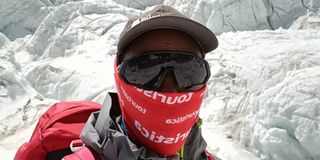
Kenyan hiker Cheruiyot Kirui posted this photo in his trekking update on April 27, 2024. He was found dead on May 23, 2024.
"His indomitable will and passion for mountaineering will forever be an inspiration. We extend our heartfelt condolences to his family and friends during this time of sorrow."
The Himalayan Times on Thursday reported that Mr Kirui's body was discovered by a rescue team from Seven Summit Treks, the organisers of the expedition that involved hikers from other countries, including the UK, Romania and Nepal.
The fate of Nawang, a Sherpa guide who was with Mr Kirui in the 'death zone', was still unknown on Thursday morning, according to base camp officials.
The banker, who worked for Kenya Commercial Bank, reportedly attempted to scale Everest without using supplemental oxygen before he went out of contact from the Bishop Rock zone.
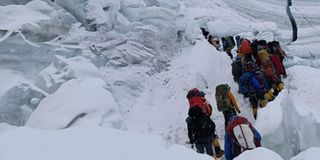
On May 9, 2024, Mr Kirui reported on his Instagram page that he and his fellow hikers had successfully made rotation number two in their quest to reach Mt Everest Summit.
At extreme altitudes (5,500-8,848 metres), supplementary oxygen can be used to prevent the effects of severe hypoxia— a condition in which not enough oxygen reaches the body’s tissues.
Although Mount Everest has been climbed without supplemental oxygen, most climbers use their air back-up once they hit 6,000 metres above sea level.
But before embarking on the hike, Mr Kirui had said that climbing with supplemental oxygen would not be a big challenge, and that is not what he wanted.
Sh7 million
“The challenge for me would be without supplemental oxygen; otherwise, I wouldn't feel like I've achieved much. So I want to see how my body can cope in such altitude,” he said.
In the mission that reportedly cost more than Sh7 million, he was attempting to reach the summit of the world’s highest mountain above sea level in his quest to test the limitations of the human body.
Mt Everest, which straddles the border of China and Nepal, stands 8,849 metres (29,032 feet) tall.
Reports indicate it has claimed more than 330 lives since 1920s, with more than 200 bodies remaining on the mountain.
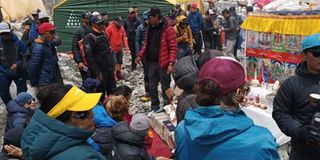
In his trekking update on April 27, 2024 Mr Kirui talked about his and his colleagues' short stay in a tent perched on a glacier at 5,300 metres above sea level.
Mr Kirui becomes the second hiker to be confirmed dead in the ill-fated expedition after Romanian climber Gabriel Tavara was found lifeless inside his tent at Camp III on Tuesday.
Mr Tavara, 48, was also attempting to climb Lhotse without using supplementary oxygen.
Mingma Sherpa, Chairman of Seven Summit Treks, reported that Mr Kirui went missing after exhibiting “an abnormal behaviour” and remaining out of contact from the Bishop Rock, a few metres below the summit point.
"Kirui, a banker working with KCB, and his Sherpa guide Nawang were last contacted at the Bishop Rock," Mr Sherpa said.

Medically, he was armed with nifedipine, and he revealed in his plan that this was because he was susceptible to High Altitude Pulmonary Edema (HAPE), a serious high altitude illness that affects the lungs and causes them to fill with fluid, which could lead to a medical emergency.
It was not immediately clear if his remains would be retrieved and ferried back to Kenya.
Mr Kirui's family in Kenya and the KCB Group were yet to issue statements on the ill-fated trip by the time the Nation published this story.
Reaching the peak of Mt Everest is not a walk in the park.
Dollar budgets
Hiking experts say it requires a lot of experience in mountaineering, a certificate of good health, good quality hiking gear and a trained guide.
One also requires rigorous physical training, a proper diet and tens of thousands of dollars. The Nepal Ministry of Tourism, for instance, charges more than $10,000 per climber.
The average time from arriving at Base Camp to reaching the summit is 40 days, according to Alan Arnette who summited the mountain in 2011.
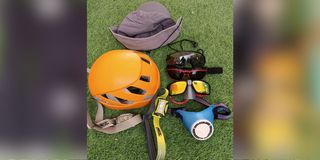
"A no-oxygen attempt comes with its special preparations and risks, physically my body is ready. On the other risks, I'm taking the following measures," he had said.
“On most climbs it is the Sherpas who are doing the heavy carrying so you are acclimatising your body to the high altitude,” he says.
"However, you are still carrying a 20lb (nine kilogrammes) to 30lb (14 kilogrammes) pack with personal gear. The acclimatisation process cannot be rushed."
Summiting The Everest can be a risky affair, especially during seasons of extreme weather conditions.
Besides thin layers of oxygen in the death zone, there is the danger of low air pressure, snow and ice, with frequent avalanches proving to be among the biggest risk factors.
Sharon Maombo contributed to this report.





